 News
News
Although peas are good for health, according to some people, they are easy to cause bloating. Is this the truth?
Peas appear for a long time, but people still do not know how the true origin of this bean is. However, many scientists based on their genetic distribution come to the conclusion that: peas are native to the Near East and Mediterranean regions.
In Egypt, peas have been found that may have been dated to 4800 - 4400 BC in the Nile Delta and between 3800 and 3600 BC in Upper Egypt.
In addition, this pea also appeared in Georgia in the 5th millennium BC, in Afghanistan in 2000 BC, during the period of the Harappan civilization (around present-day Pakistan ) and the western and southern regions. North India in the years 2250 - 1750 BC.
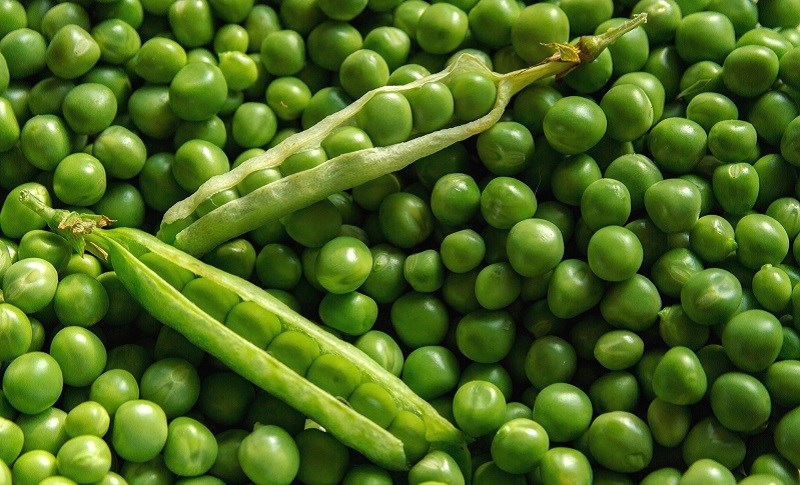
In the second half of the 2nd millennium BC, peas appeared in the Ganges basin and southern India.
Today, pea plants can be grown in many parts of the world but bring high yields and good growth rates only in humid climates, with temperatures between 18 - 20 degrees Celsius. Where the temperature is above 25 degrees Celsius and below 12 degrees Celsius, the bean plants will grow slowly, even die quickly at 35 degrees Celsius.
-800x600.jpg)
Peas are a type of seed but known as a green and sometimes yellow vegetable depending on the variety, peas have the scientific name Pisum sativum.
Peas are herbaceous plants, live for one year and are self-pollinating. Leaves are feather-shaped, at the top of the stalk are vines so that the trunk can be wrapped with other plants to climb and grow. Pea seeds contain a lot of protein .
Peas grow and achieve good quality when planted in areas with humidity between 18 - 20 degrees Celsius. Beans grow on a variety of soils, preferably still on soil with a lot of humus or humus-rich clay.
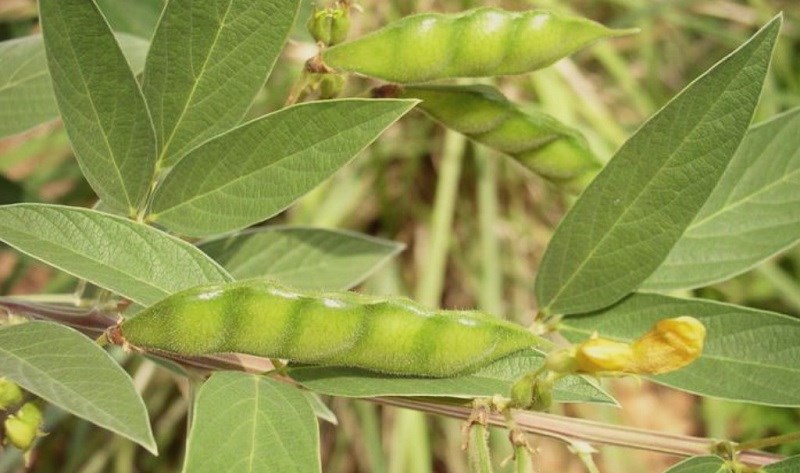
You can come across 3 species of peas with some characteristics such as:
Garden peas species : average height about 1m, many clusters of tendrils to climb and have different growing time, such as Alaska (55 days), Saber (65 days), Wando (68 days), Green Arrow (70 days). ),….
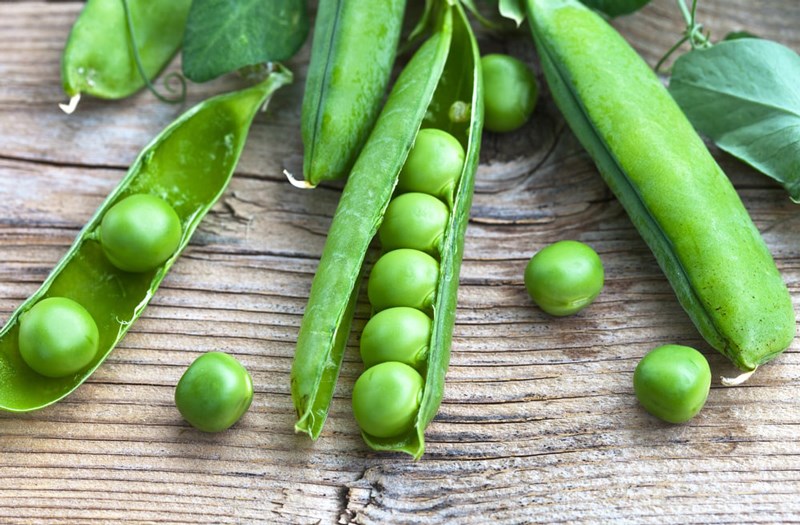
Sugar peas species : is grown based on the bean with the scientific name Pisum sativum var. macrocarpum Ser, divided into 2 types. Specifically, the type of peas has a slightly flat surface with thin shell walls, the seeds are very small inside and both pods and seeds are edible. The peas, on the other hand, have a slightly rough surface with thick shell walls.

Field peas : is a brown-gray bean, or Kapucijner bean, scientifically known as P. sativum subsp. arvense (L.) Asch. This legume is the oldest domesticated species, at least 7000 years. Field peas are vines, resinous and quite succulent, including many varieties with different characteristics and colors (blue, white, brown).
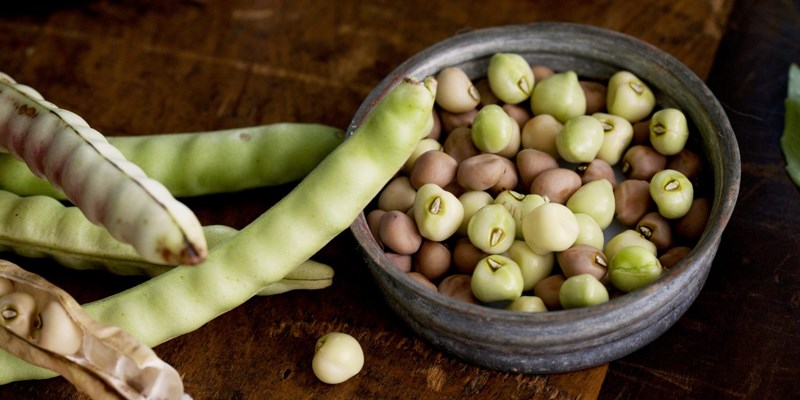
Peas are harvested according to their stages of development, for example:
With young peas : Harvest in the early morning when the young seeds begin to swell, will have better and fresher quality, easy to transport. During the picking process, it is necessary to minimize the impact force to avoid scratching or peeling the chalk layer on the pods.
With young peas when the shell changes color : After harvesting the peas that are enlarged and relatively hard (but not old or dry), people separate the peas for processing or preservation for later use using the method. canned or frozen.
With old peas (dry and discolored) : Harvest quickly before the pods wither and some plants can even split and pop the seeds right on the tree. After harvesting, people continue to dry the whole fruit, then separate the seeds and dry the seeds again before packing.
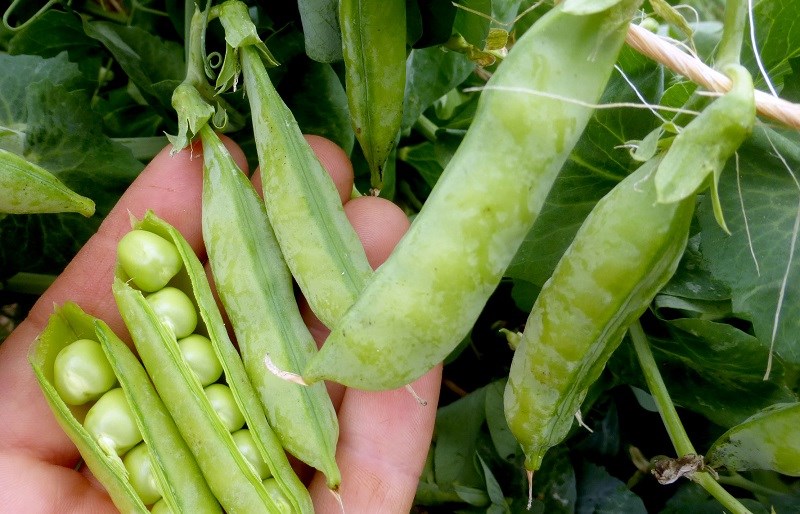
In general, peas are rich in starch, fiber, protein and many vitamins and minerals essential for humans.
On average, every 100g of peas (green, raw) includes many nutrients as follows:
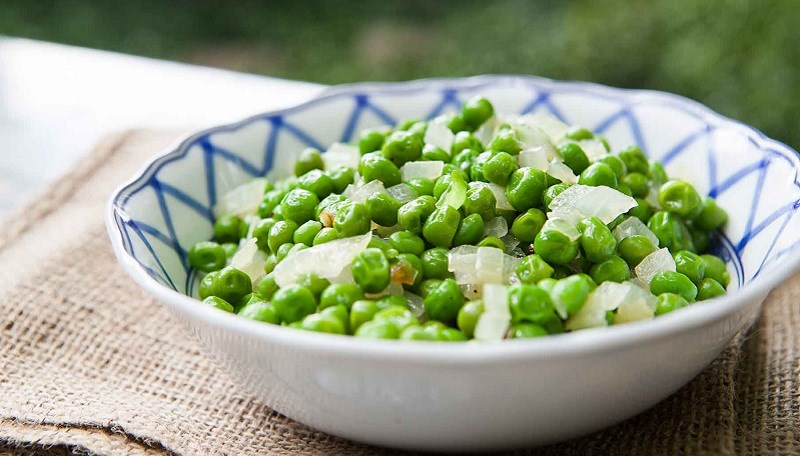
Thanks to the high nutritional content, peas have some outstanding effects that you need to know such as:
Peas contain a lot of protein (protein) and fiber, so they are considered a food that helps you feel full for a long time, supporting weight loss more effectively.
Specifically, according to the analysis results , peas are among the protein-rich foods that the absorption of protein will affect the hormones of the gastrointestinal tract, prolong the digestion time and promote the feeling of fullness. in the eater.
In short, peas are a great source of plant-based protein for people who are on a diet or can't eat animal products. However, this protein is incomplete because of the lack of the amino acid methionine. Therefore, supplement your diet with other protein sources along with peas for optimal results.

The fiber and protein in peas also have a positive effect on blood sugar control and lower the glycemic index (GI) .
Many reviews of the benefits of peas show that a diet rich in low GI foods is helpful in regulating blood sugar levels, while the benefits of fiber and protein have similar benefits. .
Fiber slows down the rate at which carbs are absorbed, which contributes to lower blood sugar levels and helps sugar stay stable rather than spike.
A high-protein diet stabilizes blood sugar in people with type 2 diabetes, according to the results of a study of 12 subjects with untreated diabetes over the course of 5 weeks.
Thanks to the good control of sugar, peas also contribute to reducing the risk of some heart-related diseases.

Chickpeas contain an amazing amount of fiber that researchers have found, providing a variety of digestive health benefits.
Specifically, fiber becomes a food source for beneficial bacteria in the gut, helping to prevent other bad bacteria. As a result of this positive impact, your body avoids a number of diseases related to the digestive tract such as irritable bowel syndrome, inflammatory bowel disease and colon cancer.

With their potassium, magnesium and calcium content, peas are all effective in preventing high blood pressure and reducing the risk of cardiovascular disease.
Furthermore, the fiber in peas in particular and legumes in general has been shown to reduce total cholesterol and bad LDL cholesterol , leading to a reduced likelihood of cardiovascular disease.
At the same time, peas also provide many carotenoid compounds , flavonols and vitamin C , which are antioxidants that have a positive impact on human health, prevent cell damage as well as reduce the rate of cancer. have cardiovascular disease.
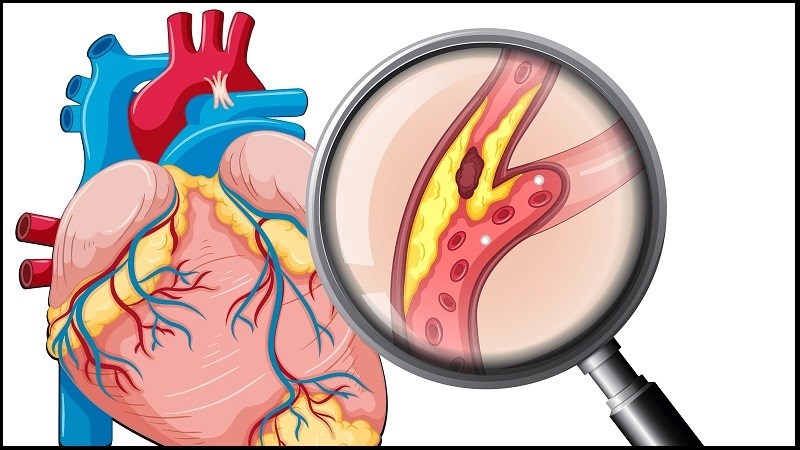
Regular consumption of peas with appropriate dosage will contribute to reducing the risk of cancer thanks to the activity of antioxidants in this bean. For instance, the compound saponin has been shown to prevent certain types of cancer and inhibit tumor growth .
Besides, peas also contain vitamin K, which is especially helpful in reducing the risk of prostate cancer .
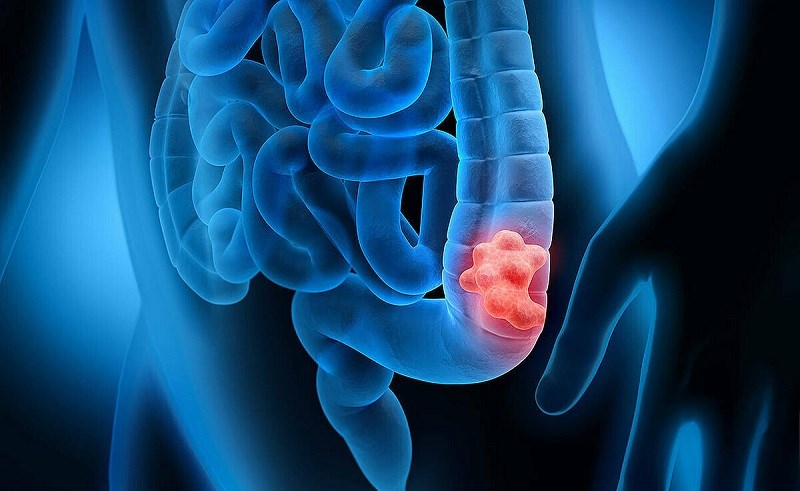
Although peas have high nutritional value and are good for health, the abuse of this food also brings some unexpected side effects, such as:
The antinutrients in peas will make it difficult for your body to absorb other nutrients and especially cause digestive upset.
Not only peas, but other legumes can also find anti-nutrients. Such as:
Phytic acid : reduces the absorption of minerals such as iron, calcium, zinc and magnesium in the body, which the researchers analyzed.
Lectins : are associated with some digestive symptoms (such as bloating and gas) and interfere with the absorption of other nutrients.
However, peas contain lower anti-nutrients than other legumes, but you should also consider when using this bean regularly.
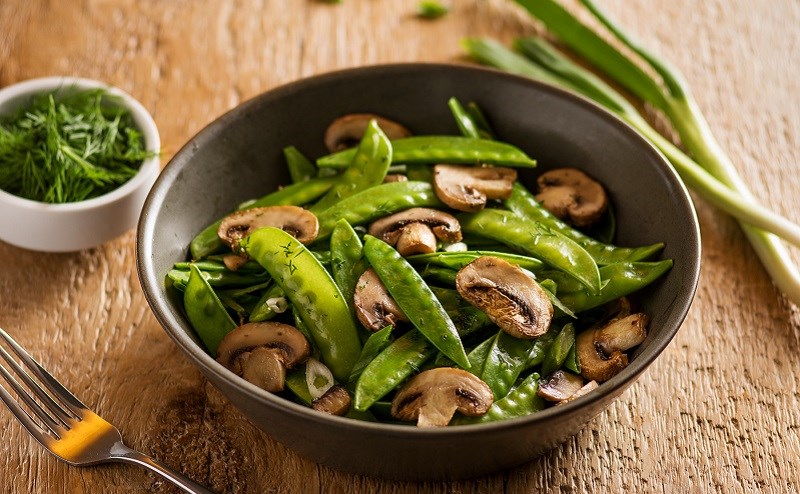
How to reduce the impact of antinutrients found in peas:
Peas contain high levels of FODMAPs (composed of oligo-, di-, mono-saccharides and polyols), they are not digested and are fermented by bacteria in the gut, creating gas, discomfort and bloating in the stomach. .
What's more, lectin resistance in peas has been linked to bloating and other digestive symptoms in some people.

You can buy peas fresh or canned in supermarkets, markets and some agricultural stores for a small difference.
Depending on your needs and processing method, how do you choose peas? For the fresh form, you can buy pre-separated beans or pick them up yourself. As for canned peas, packed in bags, you should choose the latest production date to ensure safety for health.
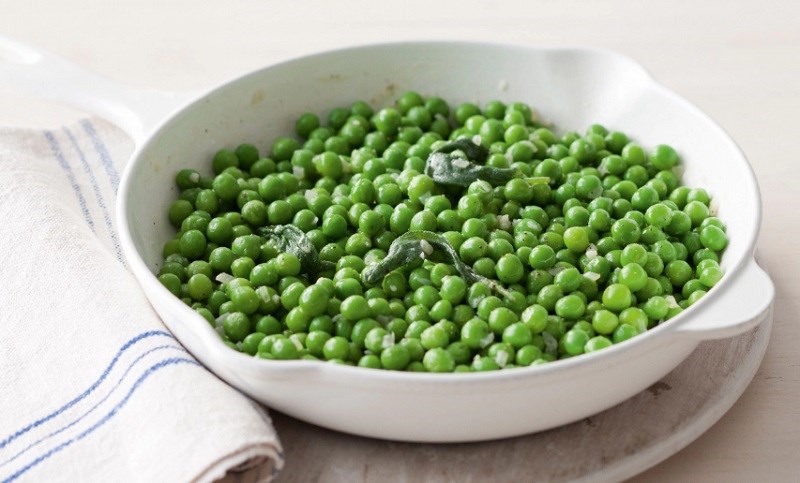
Peas are easy to eat and can be processed into many attractive dishes, suitable for all ages. You can do it:
Rib porridge cooked with peas not only has a beautiful green color, but also has a delicious sweetness from the stew bone and the fleshy taste of peas. This is a very nutritious porridge for children.

With just a few simple steps, you can instantly make delicious pea shrimp rice with a rice cooker. Shrimp meat is tough, eye-catching orange color with sweet green peas, very easy to eat.

Changing with pea jam, you will be fascinated with the sweet, crunchy taste but still feel the characteristic aroma of this bean.
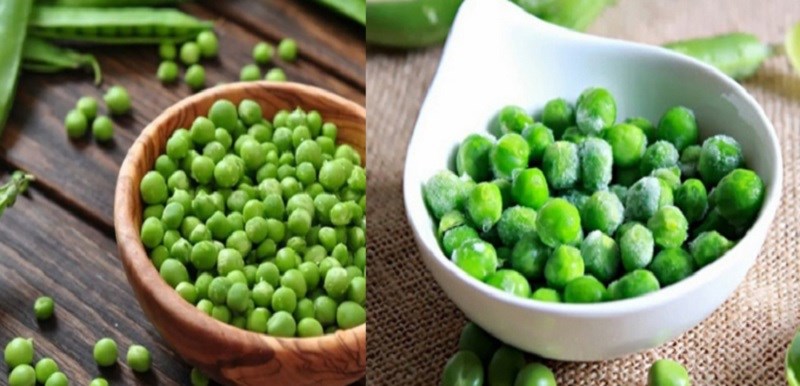
Peas are also made into soups, depending on your preference, you can make a liquid or thick soup with the characteristic green color of the beans. The fatty taste of beans combined with bone broth, will be a nutritious soup for your family.

Fried rice is a very easy dish for all ages, because it is combined with many other ingredients such as fresh shrimp, bacon, eggs, carrots, and peas. The rice grains are dry but still full of flavor, especially the fatty taste of eggs, the flesh of beans, the toughness of shrimp and the crunchiness of carrots.